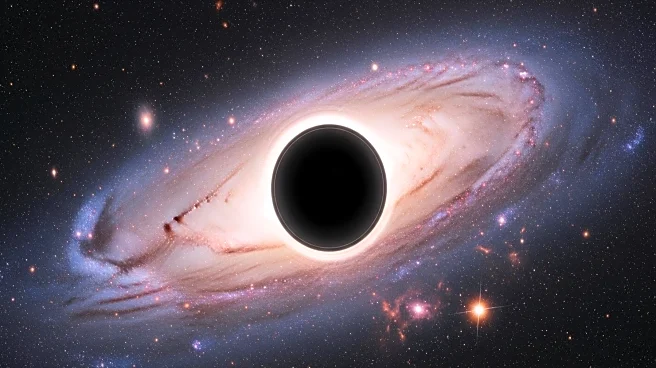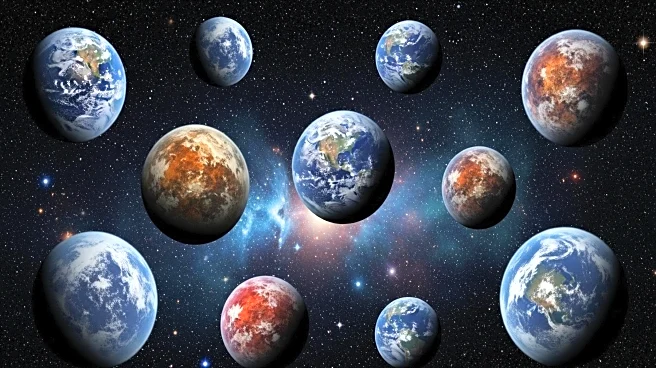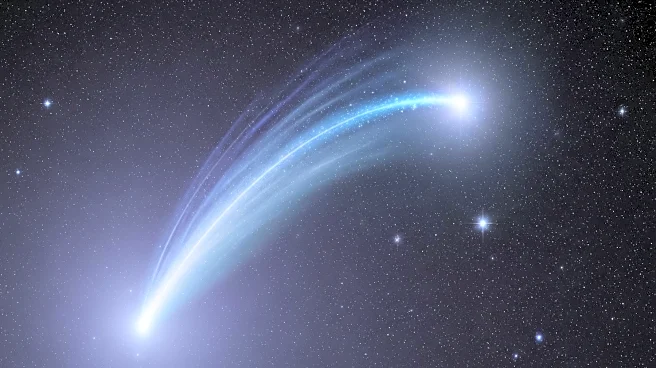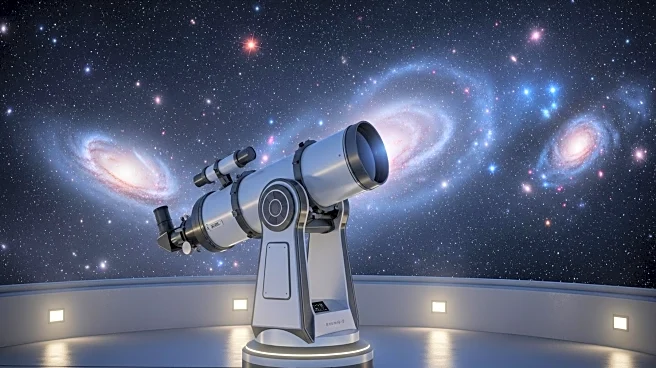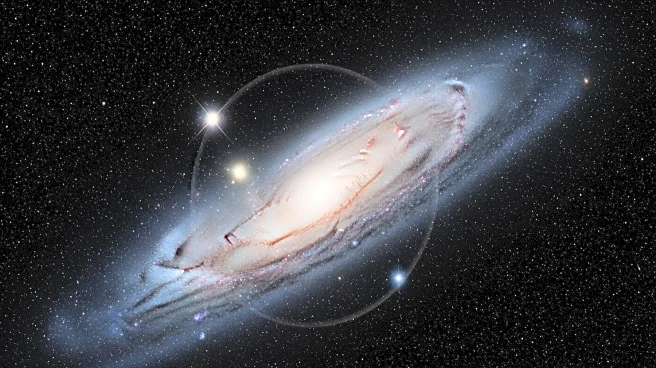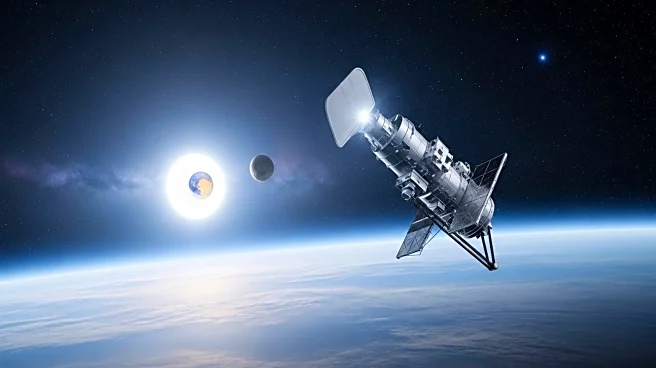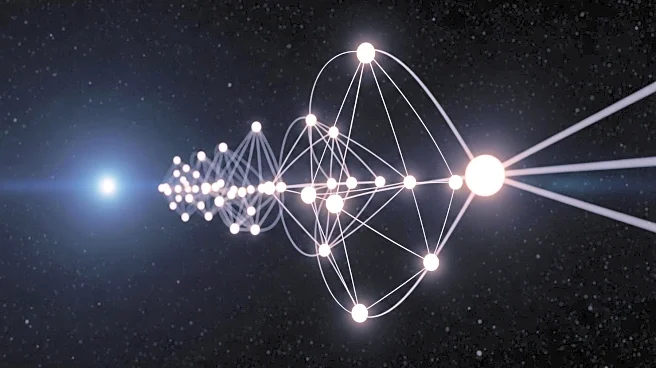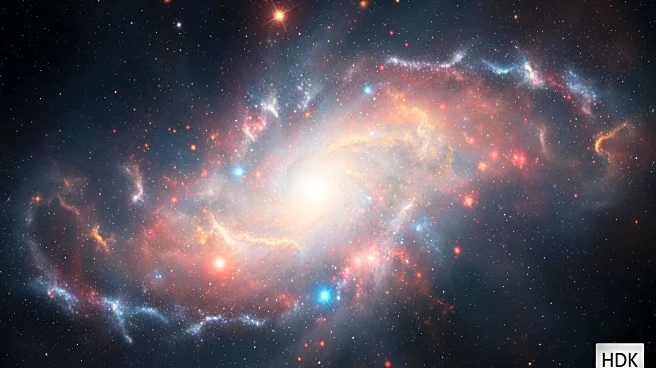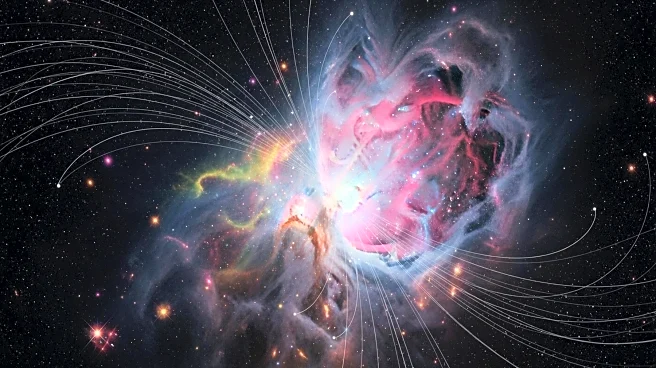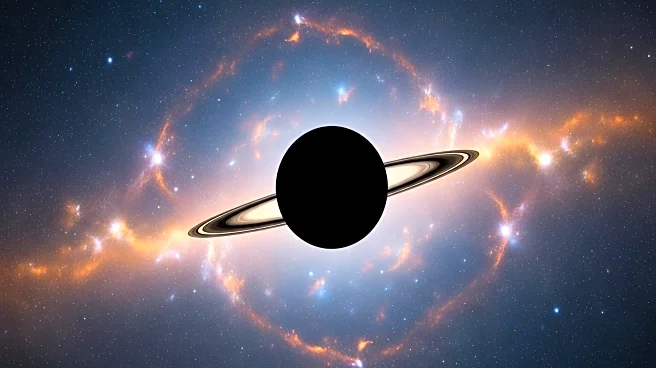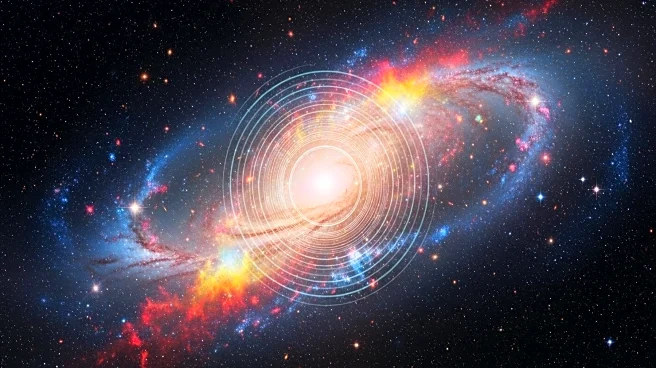What is the story about?
What's Happening?
Astronomers using the James Webb Space Telescope have identified a new cosmic object, potentially a 'black hole star,' which could explain mysterious 'little red dots' observed in 2022. These objects are hypothesized to be black holes surrounded by dense gas, glowing like stars due to rapid feeding. The discovery challenges previous theories that these dots were massive galaxies or supermassive black holes. The study, led by Anna de Graaff, suggests that these objects could represent a new class of cosmic phenomena, offering insights into early universe evolution.
Why It's Important?
The identification of 'black hole stars' could revolutionize our understanding of cosmic evolution and the formation of supermassive black holes. If confirmed, this discovery could provide a new perspective on the processes that shaped the early universe, potentially solving puzzles about the rapid growth of black holes. It also highlights the capabilities of the James Webb Space Telescope in uncovering previously unknown cosmic phenomena, advancing our knowledge of the universe's history and structure.
What's Next?
Further observations and studies are needed to confirm the existence of 'black hole stars' and understand their role in cosmic evolution. Researchers plan to use the James Webb Space Telescope to study similar objects and gather more data to test the robustness of this hypothesis. Continued exploration could reveal whether these objects are a distinct class or part of a larger evolutionary process involving galaxies and black holes.
AI Generated Content
Do you find this article useful?
